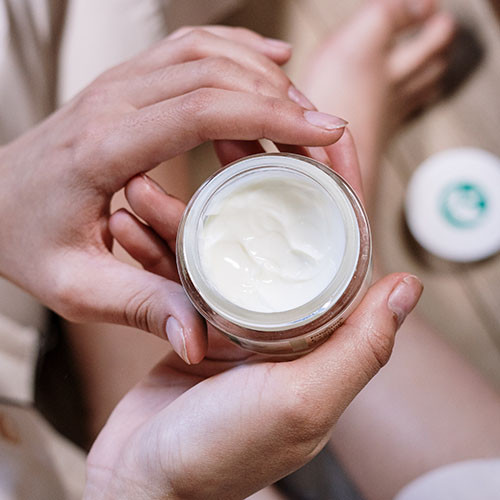The Real Deal: Everything You Need to Know About Retinol
Posted by Nikki Wisher on Oct 30th 2020
Have you ever heard or seen an ad that made a statement like “Now containing retinol!” and your only thought was, “So what? What am I missing?”
People constantly hear retinol touted as this magical anti-aging ingredient that everyone over the age of twelve absolutely must have in their skincare routines. Is it really all that it’s cracked up to be? How does it even work?
Wonder no more, my fellow skincare fans. Let’s dig in.
What Is Retinol?
To put it in simple terms, retinol is vitamin A. Retinol products, called retinoids, come in many forms and types.
Some products have a particular retinol called Retin-A, and these products are only available through a physician’s prescription. Don’t worry, though. There are plenty of OTC products that contain milder yet still effective forms of retinol.
Why Is Retinol So Popular in Skincare?
What exactly makes retinol such a powerful anti-aging ingredient? The answer lies in its multitasking prowess.
Retinol manages to exfoliate damaged skin cells, rebuild skin-firming collagen, and repair sun damage at the same time. These are some of the most essential ways to keep your skin looking and feeling young.
Retinol even has the ability to even out your skin tone. In other words, it has the rare ability to reduce wrinkles and lines while also reducing age spots.
Tips for Using Retinol for Your Skin
As with any type of skincare ingredient, there are right and wrong ways to use retinol. To some, it can cause irritation and dryness. Stick to these tips so you can enjoy all of retinol’s benefits without the potential downsides.
1. Ease In
Retinol can be rough on your skin, especially if you leap into it without warning. The best way to keep side effects to a minimum is to ease your way into it slowly.
Start with low concentrations of retinol, which you can find in products like the Biopelle Retriderm Serum Mild 0.5%. Only use the product around once per week.
After your skin has gotten used to this for a few weeks, you can start using the product twice per week. Watch your results over the next several months. If you want stronger results, you can then step up to a product with a slightly higher concentration of retinol.
If your skin becomes too dry or irritated, it’s time to take a step back. This is especially common in people with eczema, psoriasis, or rosacea. If you’re in that group, keep a more watchful eye and give your skin more time to get used to the retinol before you increase your dosage.
2. Stick to One Product
You’ll notice that there are many types of products that include retinol. You’ll find retinol serums, retinol night creams, retinol face masks, you name it. If one retinol product is great, piling on several will be even better, right?
Not necessarily. Start with one product and follow the steps above for easing your skin into it. When your skin can handle twice weekly retinol, give it a month or so before you try to incorporate the second retinol product. As always, watch your skin and back down if you notice inflammation.
3. Be Consistent
Skincare isn’t plastic surgery. You won’t be able to use your retinol once or twice and wake up to a face that looks ten years younger. Even plastic surgery takes more patience than that, to be honest.
To get results from your retinol, you need to keep using it consistently on a regular basis. It takes time to revitalize your skin, especially with milder retinol products. If you have a special event on the horizon and you want to look your best, start incorporating retinol at least a few months before the big day.
4. Go for Quality
This is true for all skincare products, but it’s especially true with retinols: not all products are created equal.
The retinol concentration isn’t the only factor that determines how successful a product will be. It depends on the way the retinol itself is prepared and formulated too.
Your best bet is to choose a high-quality retinol product with strong customer reviews. You could also ask your dermatologist for their recommendation.
5. Wait Until the Sun Goes Down
Retinol doesn’t mix with the sun for a few reasons. First, it tends to break down in UV light, which will make it less effective. Second, and most importantly, it makes your skin more sensitive to sun damage.
The solution? Use your retinol products at night rather than during the day. It’s also important to use a daily sunscreen with an SPF of 30 or higher, because you still get some light sensitivity if you only use retinol at night.
6. Don’t Skip the Moisturizer
Moisturizer is always a must for your skin, but it’s especially critical if you’re using retinol.
Retinols have a tendency to dry out your skin. If you’re using a soothing moisturizer every morning and every night, that’s less likely to happen. This is especially important if you’re already prone to dry skin.
A Retinol Revolution for Your Skin
The years tick by and they have a way of getting to all of us at some point. Your skin doesn’t have to know, though. Retinol products are some of the best ways to repair aging that has already happened and prevent further aging from taking hold. With the tips above, you can put your retinol to good use like a pro.

